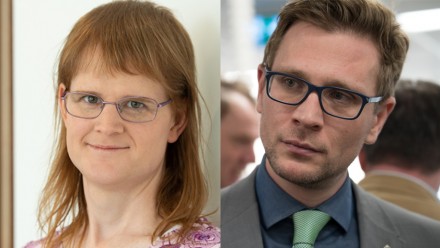Revving up community engagement remotely
How do you prepare to engage diverse industry, user and community stakeholders to get their views about an energy project that’s never been attempted in Australia, and approach them during a pandemic?
That’s the challenge facing researchers working in the Battery Grid and Integrated Storage Program (BSGIP) at The Australian National University.
They’re playing a vital role in the two-year Realising Electric Vehicles-to-grid Services (REVS) project, recently announced by ARENA, which aims to prove how electric vehicles can support Australia’s energy grids.
“Given COVID19 limitations, we are planning for almost all of our engagement to be by digital means,” explains Hugo Temby, a Research Manager at BSGIP.
“This will range from the mundane – think email – through to more innovative research methods like video conferencing and video journals, some of which we have been successfully applying to our VOICES research investigating people’s experiences with new energy tech.”
Plans that were concrete before COVID-19 have been adjusted, but the intent remains the same: to gauge various groups’ views about how 51 electric vehicles in government and industry fleets can demonstrate the feasibility of vehicle-to-grid (V2G) services.
Engagement has begun internally with the REVS project’s consortium partners, who span the electricity and transport supply chain, including ActewAGL, Evoenergy, Nissan, Sgfleet, and JET Charge.
Hugo and his colleagues are shaping their questions around with which communities and entities they’ll engage, using Microsoft Teams and other technologies so everyone can contribute, irrespective of the scheduling challenges that can arise working from home.
“The other important point for any research project like this is to ensure that it complies with Australian standards for ethical research, and that any risks to people’s participation are identified and managed appropriately,” he adds.
“In the future we are planning a series of stakeholder interviews, focus groups and workshops.
“As well as industry, policy makers and regulators this will include a focus on end users—so ACT Government drivers, fleet managers, and hopefully even some of the Canberrans who access services via the new V2G-enabled fleet.”
BSGIP hosted at ANU, is jointly funded by the ACT Government under the Renewable Energy Innovation Fund initiative and the ANU. It was established in April 2018, as an initiative of the ANU Energy Change Institute.
BSGIP’s strengths include first, the various skills of their people – who comprise engineers, social scientists, analysts and more – and second, their collective experiences overcoming complex challenges.
Take for instance the ARENA-funded CONSORT Bruny Island Battery Trial, an award-winning, multi-party project comprising universities, industry, and an electricity provider, off Tasmania’s southern coast.
Some 32 households used solar PV and battery storage systems, and software that monitored their energy consumption to help minimise households’ power bills, and the need for TasNetwork’s backup diesel generator.
“If we look at what we have with REVS today, we’ve got a product or stack that works for people in a variety of roles, be they as a customer, or a retailer offering a service, to see the value they’re getting from the network,” says Laura Jones, a BSGIP Senior Analyst who was formerly with TasNetworks.
“On Bruny we created a microcosm of that, with technology from Reposit Power that created value that was brought back to us at TasNetworks.”
Hugo has joined ANU on secondment from the ACT Government, where the way community engagement is done differs from that at the university but is still integral.
“Community and industry engagement has been really fundamental in both of my roles, and in each instance has contributed to policy development and project delivery,” he says.
“One of the exciting aspects of the REVS engagement though is the potential to inform new business models that will help unlock the value of V2G in Australia.
The REVS project, like any, will rely on its structure and its participants, Tasmania-based Laura says.
“We’ve got the value chain in REVS to be able to create a future that works,” she says.
“You can have a structure that says you can do it, but if the people involved don’t want to do that, it won’t happen.
“One lesson we learned [from Bruny] was in the project sense that by creating the right team, you can work through any problem.
“That includes the organisations involved being open and honest, because issues are going to happen to any project.
“You’ve got to create the right conditions, got to fertilise the soil, or nothing will grow.”











